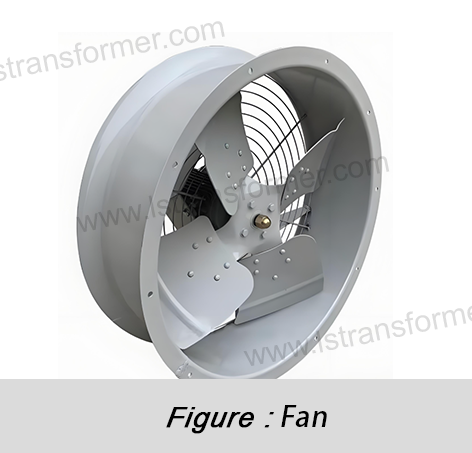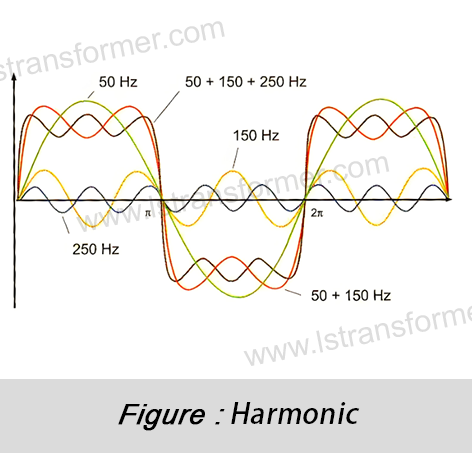What Are the Possible Causes of Excessive Temperature Rise in Reactors? — An In-Depth International Perspective
What Are the Possible Causes of Excessive Temperature Rise in Reactors?
— An In-Depth International Perspective
Reactors are core devices in power systems for current regulation, harmonic suppression, and stability assurance. The health of their operating temperature directly impacts the safety and reliability of the entire grid. According to international standards such as IEEE C57.21 and IEC 60076-6, the temperature rise of reactor windings and cores (where applicable) during operation must be strictly controlled within design limits. Abnormal temperature rise is not only an early warning of performance degradation but also a potential precursor to serious failures, which may lead to accelerated insulation aging, reduced mechanical strength, or even fire hazards. Therefore, accurately diagnosing the root causes of excessive temperature rise is critical for power engineers and maintenance teams worldwide.
This article explores six core causes in detail, providing analysis and countermeasures aligned with global engineering practices.
Content
1. Core Cause 1: Overloading (Excessive Current)
● Explanation:Reactors are designed with a rated current (In). When the actual current (I) flowing through the reactor continuously or repeatedly exceeds In, overloading occurs.
● Temperature Rise Mechanism:
(1)Increased Copper Losses:Power loss in windings (copper loss, Pcu) is proportional to the square of the current (Pcu ∝ I²). A 10% current overage increases copper loss by ~21%, while a 20% overage spikes it by ~44%. The excess energy converts directly into heat.
(2)Iron Loss Escalation (for Core Reactors):Excessive current drives the core into saturation, sharply reducing permeability. To maintain magnetic flux, excitation current rises nonlinearly, significantly increasing iron losses and heat generation.
● Consequences:If the heat from overloading isn’t dissipated promptly, hotspot temperatures will surge beyond design limits.
● Diagnosis & Solutions:
(1)Real-Time Monitoring:Deploy precision current transformers (CTs) and temperature sensors (e.g., PT100) for continuous monitoring.
(2)Load Management:Optimize system operation based on historical load curves. Upgrade reactor capacity or add parallel units if needed. Key Principle: Reduce current below In to minimize Pcu ∝ I² losses.
2. Core Cause 2: Severe Cooling System Failure
● Explanation:Temperature rise (ΔT) depends on total losses (Ptotal) and thermal resistance (Rθ): ΔT = Ptotal × Rθ. Cooling failures drastically increase Rθ.
● Common Failures:
(1)Air Cooling:Fan failure or clogged filters reduce airflow (common in dry-type reactors).
(2)Liquid Cooling:Pump failure, blocked pipes, dirty radiators, or degraded coolant (common in oil-immersed reactors).
(3)Surface Contamination:Dust or oil layers act as thermal barriers, hindering heat dissipation.
● Temperature Rise Mechanism:Higher Rθ elevates ΔT even if Ptotal is normal.
● Diagnosis & Solutions:
(1)Maintenance:Regularly inspect fans, filters, coolant levels, and radiator cleanliness.
(2)Cleaning:Remove surface debris; replace filters/coolant. Key Principle: Restore cooling efficiency to reduce Rθ.
(3)Environment:Ensure proper ventilation and clearances per manufacturer guidelines.
3. Core Cause 3: Harmonic Pollution (Harmonic Distortion)
● Explanation:Nonlinear loads (e.g., VFDs, rectifiers) inject harmonic currents into the grid.
● Temperature Rise Mechanism:
(1)Skin/Proximity Effects:High-frequency harmonics increase AC resistance, raising copper losses.
(2)Iron Losses:Harmonics distort hysteresis loops, escalating losses (∝ frequency¹·³⁻¹·⁶ × flux density²).
(3)Resonance Risk:Harmonic frequencies may trigger resonant overcurrents.
● Consequences:Hidden heat buildup despite normal current readings.
● Diagnosis & Solutions:
(1)Power Quality Analysis:Measure THD% and harmonic spectra (focus on 5th, 7th, 11th, 13th).
(2)Mitigation:Install active/passive filters (APF/PPF); avoid resonance. Key Principle: Eliminate harmonics to reduce losses.
(3)Design:Use reactors rated for "K-Factor" or "Harmonic Mitigating" in harsh environments.
4. Core Cause 4: Insulation Degradation & Internal Defects
● Explanation:Insulation ages due to electrical/thermal stress or manufacturing defects.
● Temperature Rise Mechanism:
(1)Partial Discharge (PD):Degraded insulation causes PD, generating heat and leakage currents.
(2)Turn-to-Turn Shorts:Severe defects may create short circuits, localizing extreme heat.
● Consequences:PD sounds, odors, or abnormal insulation parameters (e.g., Tanδ).
● Diagnosis & Solutions:
(1)Testing:Perform IR, PI, Tanδ, PD, and DGA (for oil-immersed reactors).
(2)Action:Repair or replace faulty reactors. Key Principle: Eliminate heat sources from defects.
5. Core Cause 5: Design/Installation Errors
● Explanation:
(1)Design Flaws:Underestimated operating conditions (e.g., cooling, harmonics) or low-grade materials.
(2)Installation Issues:Loose connections (increasing contact resistance), blocked cooling paths, or incorrect radiator angles.
● Temperature Rise Mechanism:Hotspots from poor contacts or disrupted cooling.
● Solutions:
(1)Design Review:Select reactors per IEC/IEEE standards.
(2)Quality Control:Ensure proper torque, cooling system setup, and vibration damping. Key Principle: Optimize design and installation to minimize losses.
6. Core Cause 6: Harsh Operating Environments
● Explanation:Conditions exceed design limits (e.g., high ambient temperature, altitude, pollution).
● Temperature Rise Mechanism:Higher ambient temperature (Ta) and Rθ escalate ΔT.
● Solutions:
(1)Cooling Upgrades:Add fans, air conditioning, or liquid cooling. Key Principle: Lower Ta and Rθ.
(2)Enclosure:Use IP-rated housings or sealed rooms.
(3)Altitude Compensation:Select reactors rated for high-altitude operation.
Tables for Quick Reference
Table 1: Reactor Types & Temperature Rise Characteristics
Reactor Type | Cooling Method | Typical ΔT Limit (°C) | Key Risks | Maintenance Focus | Standards |
Dry-Type Air-Core | AN/AF | 75 (Class F) | Overload, harmonics, dust | Surface cleaning, airflow | IEC 60076-6, IEEE C57.16 |
Dry-Type Iron-Core | AN/AF | 100 (Class H) | Overload, harmonics, cooling | Core temp, fans | IEC 60076-6, IEEE C57.12.01 |
Oil-Immersed Iron-Core | ONAN/ONAF | 55-65 (oil), 65-75 (winding) | Clogged radiators, oil degradation | Oil level, DGA, pumps | IEC 60076-6, IEEE C57.12.90 |
Table 2: Harmonic Impact on Losses
Harmonics | Copper Loss Impact | Iron Loss Impact | Overall Effect | Priority |
Low-Order (3rd, 5th) | Pcu ∝ I² (significant) | Core saturation (∝ Bⁿ, n≈1.6-2.2) | Severe | Highest (filter) |
Mid-Order (11th, 13th) | Skin effect (Rac > Rdc) | Eddy losses (∝ f²) | Significant | High |
Key Formula: ΔT = Ptotal × Rθ
(1) Ptotal:Total losses (copper + iron + stray).
(2) Rθ:Thermal resistance (lower = better cooling).
Optimization:Reduce Ptotal (avoid overload, harmonics) and Rθ (improve cooling).
In Summary
Excessive reactor temperature rise is a multidisciplinary challenge. Proactive measures—design compliance, installation rigor, real-time monitoring (current, temperature, power quality), and preventive maintenance—are essential for safety and longevity. Deploy infrared thermography and online monitoring systems to preempt failures.
Contact Us
LuShan, est.1975, is a Chinese professional manufacturer specializing in power transformers and reactors for 50+ years. Leading products aresingle-phase transformer, three-phase isolation transformers,electrical transformer,distribution transformer, step down and step up transformer, low voltage transformer, high voltage transformer, control transformer, toroidal transformer, R-core transformer;DC inductors, AC reactors, filtering reactor, line and load reactor, chokes, filtering reactor, and intermediate,high-frequency products.
Our power transformers and reactors are widely used in 10 application areas: rapid transit, construction machinery, renewable energy, intelligent manufacturing, medical equipment, coal mine explosion prevention , excitation system, vacuum sintering(furnace), central air conditioning.
Know more about power transformer and reactor :www.lstransformer.com.
If you would like to obtain customized solutions for transformers or reactors, please contact us.
WhatsApp:+86 17267488565
Email:marketing@hnlsdz.com

 EN
EN
 FR
FR DE
DE ES
ES


